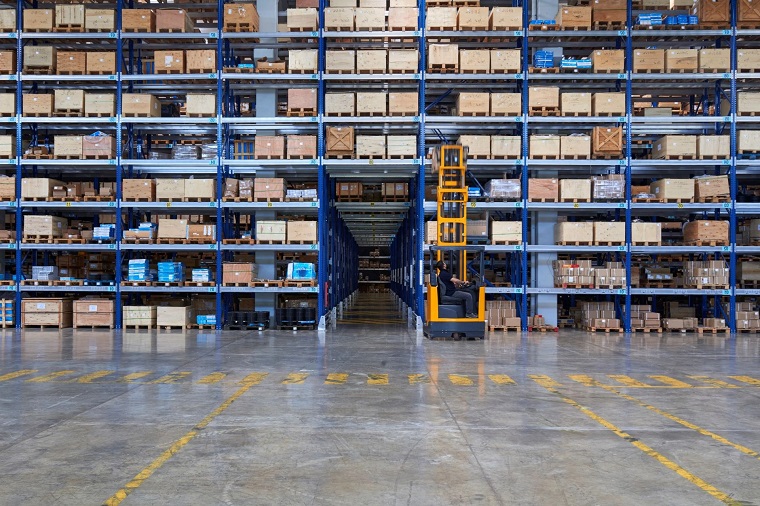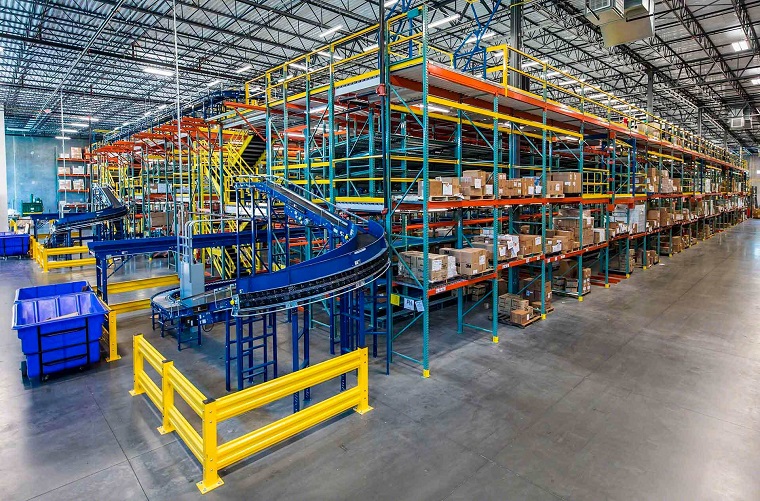Sorting out items on a large scale can be a daunting task, even for the most experienced of organisers. Luckily, there are numerous solutions when it comes to large scale warehouses and industrial objects – shelving units. Not just any shelving units but heavy duty ones are the best logistics investment a company can make. They allow you to not only store and protect your inventory properly but also to help increase workplace efficiency and save space. This of course applies if you implement the right type of heavy duty shelving in the right place.

source: cyzerg.com
Types
Wire
Known as the most visually appealing industrial shelving, wire racks are the perfect solution for a wide range of both industrial and commercial applications. This type of heavy duty shelving for garage is known to collect less dust than any other similar solution. They also offer better product visibility and airflow whilst being available in both mobile and stationary variants. Some disadvantages are limited load carrying capacity and limited size range due to their overly simple design.
Boltless
Boltless shelving units are the best solution if you want stability and simplicity. Also known as rivet shelving, these are compact and easy to install. They are also affordable and durable and can be used in stock rooms as well as warehouses.
Bulk Rack
This is a heavy duty storage solution that features welded frames, deck supports, and beams. This makes for a strong and sturdy construction that comes with a higher load carrying capacity. These wide span racks can be used for a wide range of applications due to their versatile design. Bulk racks are easy to assemble too but they can’t be used with forklifts and they don’t come in many sizes.
Pallet Racking
This type of shelving system is meant for industrial facilities that receive large amounts of inventory on the daily. Pallet racking systems are the most complex option when it comes to assembly but offer a lot of storage space, easy access with a forklift and exceptional strength.

source: azureedge.net
Materials
Steel
Steel makes for a strong and sturdy construction. You need to remember though that since this is the strongest shelving material, it is also the heaviest.
Copper
Whilst copper shelving isn’t as common in the industrial scene, it is sometimes used for industrial purposes since it is a visually appealing solution. Copper heavy duty shelves are known to be anti-bacterial and non-magnetic too.
Aluminium
When you want heavy duty shelving that offers both the strength and sturdiness of steel and the appeal of copper, aluminium is a good midway point. It’s considerably lighter than steel, though close in strength.
How Do You Know How Much Weight A Shelf Can Hold?
Something that a lot of people ask is how one can be sure a shelf on their unit will be able to hold certain items. To find this out, you’ll want to start first by multiplying the number of brackets by their safe load. This will give you the shelving’s safe load capacity. If, for example, a shelf has 3 brackets rated for 113 kg, the safe load for the brackets is going to be 28,3 kg which means that the safe load capacity for the shelf will be 85 kg.

source: cdnwm.com
Warehouse Storage Tips
Label
Having information labels on all of your products and items is essential as it will allow you workers to get info on each product without looking through them manually. A scanned bar code is all that’s needed to access important documentation. This reduces wasting time, human errors and all it requires is a labelling system to keep track of everything.
Floor Plan
Ideally, you should look to maximise the available space whilst minimising the handling of goods and enable easy access to them too. Storage flexibility is a must. Shelving, equipment, tools and packaging benches need to be placed in areas where they will be easy to access as to provide smooth and safe workflow.
Layout
No layout should obstruct your daily tasks, instead it should make them easier to perform. The order in which your warehouse layout will go depends on the number of steps there are when it comes to daily tasks. You should also discuss possible issues with your workers as they are in direct contact and can point out to details that will enable a more efficient workflow.














